
Since the 1990s China has become the largest importer of U.S. soybeans. Page 16.
CONFERENCE SUCCES S 10 YEARS AG SUMMIT
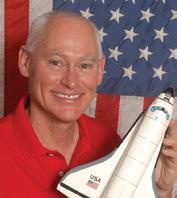



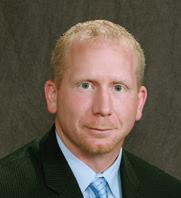

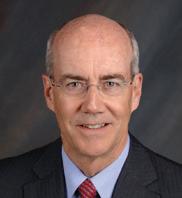
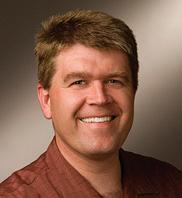

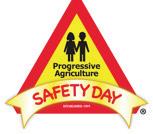
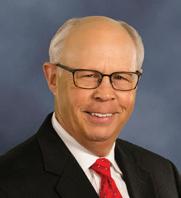
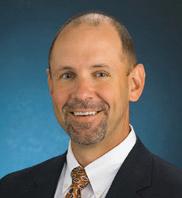

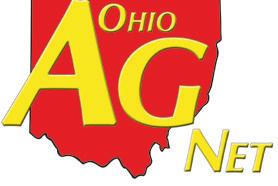



Since the 1990s China has become the largest importer of U.S. soybeans. Page 16.
CONFERENCE SUCCES S 10 YEARS AG SUMMIT















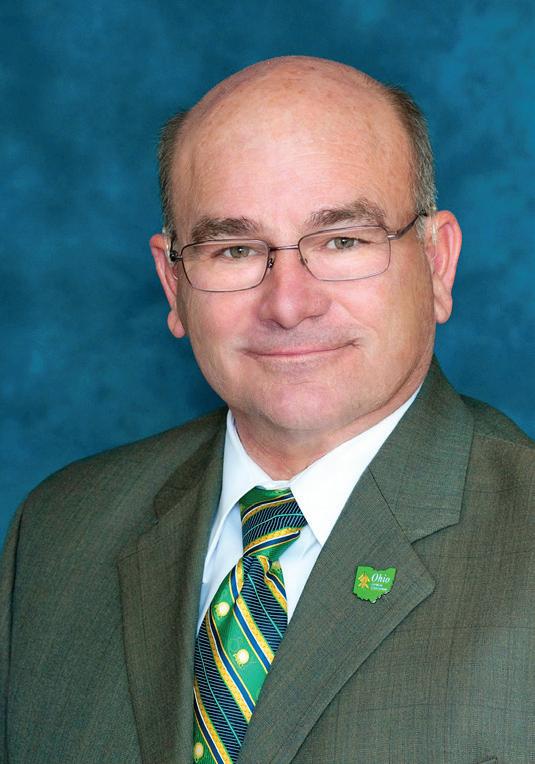
Tommie Price
Ohio Soybean Association Chairman Putnam County soybean farmer
As you may be aware, the Ohio Soybean Association (OSA) ensures Ohio soybean farmers are involved in the regulatory process. While the regulatory burden we’re living under can make it tough to keep our input costs down, your OSA farmer leaders work to take action when polices come forward that affect your bottom line. I’ve heard that you are only as good as the people you work with, and I consider OSA and the entire Ohio soybean industry a team working alongside one another.
OSA recently submitted a joint letter with the Ohio Corn and Wheat Growers Association (OCWGA) to the Ohio Environmental Protection Agency (EPA) that offered comments on the State of Ohio’s Western Lake Erie Basin Collaborative Implementation Plan. The plan, released by the EPA, covers how the state plans to achieve a 40% reduction in phosphorus runoff in the Western Lake Erie Basin by 2020. OSA along with the Ohio Corn Marketing Program, Ohio Small Grains Marketing Program and Ohio Soybean Council have made water quality a top priority for Ohio’s grain farmers and as a reflection, have invested millions dollars in research, education and promotion that focus on solutions.
A few highlights from the letter are listed below:
▶ OCWGA and OSA have also spent considerable resources and have worked closely with the Ohio legislature and the administration to develop responsible policies — Senate Bill 150 and Senate Bill 1.
▶ According to Effects of Conservation Practice Adoption on Cultivated Cropland Acres in Western Lake Erie Basin, 2003–06 and 2012 by the U.S. Department of Agriculture, Natural Resources Conservation Service (USDA-NRCS), farmers have already at a minimum reduced their total phosphorous usage in the WLEB by 13% (21.5 pounds per acre in 2003–06 to 18.7 pounds in 2012).
▶ The increased conservation efforts by farmers do not include additions made since 2012. This must be accounted for in any data analyses and models moving forward in order to accurately reflect what’s happening on the ground.
▶ We believe that establishing priority watersheds within this Collaborative is premature for a number of reasons.
▶ A more holistic approach to our water quality issues in the WLEB is the most responsible approach, as a proper solution must include all possible sources of nutrient loading. Outside of the WLEB and outside Ohio there are examples of non-agricultural areas experiencing algal problems.
As we approach the fall season, stay tuned for further information as OSA continues to play an active role in protecting Ohio soybean farmers in the regulatory process.
President
Adam Graham, Logan County
First Vice
President
Todd Hesterman, Henry County
Vice President
Allen Armstrong, Clark County
Treasurer
Scott Metzger, Ross County
Secretary
Andy Stickel, Wood County
Chairman
Tommie Price, Putnam County
trustees
Jerry Bambauer, Auglaize County
Amy Sigg Davis, Warren County
Bret Davis, Delaware County
Caitlyn Heimerl, Industry Affiliate Ex-Officio
James Heimerl, Licking County
Jerry Meyer, Industry Affiliate Cargill
Cindy Parker, Miami County
Derek Reusser, Holmes County
Ryan Rhoades, Marion County
Jeff Roehm, Highland County
Bruce Simmons, Medina County
Jeff Sollars, Fayette County
Jennifer Wilson, Van Wert County
Kerrick Wilson, Preble County
American Soybean Association
Board Representatives
Jerry Bambauer
Bret Davis
Jeff Sollars
Staff Credits
Adam Ward-Publisher
Jennifer Coleman-Editor
Katie Bauer-Contributing Editor/Staff Writer
Kayla Weaver-Contributing Writer
Donovan Harris-Design Director
Brent Warren-Senior Designer
Barry Falkner- Photo Quality/Proofer
Tony Green-Advertising Production
Ohio Soybean news is published six times a year by the Ohio Soybean Association, 918 Proprietors Rd., Suite A, Worthington, OH 43085. Phone: 614-476-3100. For address corrections contact Ohio Soybean News at 918 Proprietors Rd., Suite A, Worthington, OH 43085.
Web address: www.soyohio.org E-mail: cdeboard@soyohio.org
Comments and statewide news articles should be sent to the above address. Advertising space reservation must be made by the first of the month preceding publication. In consideration of the acceptance of advertisement, the agency and the advertiser must, in respect of the contents of the advertisement, indemnify and save the publisher harmless against any expense arising from claims or actions against the publisher because of the publication of the content of the advertisement.
For Advertising Sales Contact: Matt Herman- (612) 812-5833 matt.herman@dtn.com
Ohio Soybean Association 2016 Member Benefits
• 10% discount on one-time purchase at Tractor Supply Company †
• Rebate coupon for $.05/gallon up to 2,000 gallons of soy biodiesel†
• Subscription to Ohio’s Country Journal*†
• 6 issues of the Ohio Soybean News magazine*†
• 9 issues of the Ohio Leader Letter — OSA’s member-only newsletter*†
• NEW MEMBERS: Eligible to win 50 hours on an MT 600 Challenger tractor*†
• Each new or renewing member will receive their choice of a Monsanto BioAg product: 100 units of Optimize® dualaction inoculant; 100 units of TagTeam® LCO MultiAction® inoculant; or 50 units of QuickRoots®
† 3-year membership incentive
* 1-year membership incentive
Seed Incentive Program
Join or renew as a 3-year member and receive a coupon worth $205 off the purchase of a minimum of 100 bags of soybean seed from a participating company listed below:
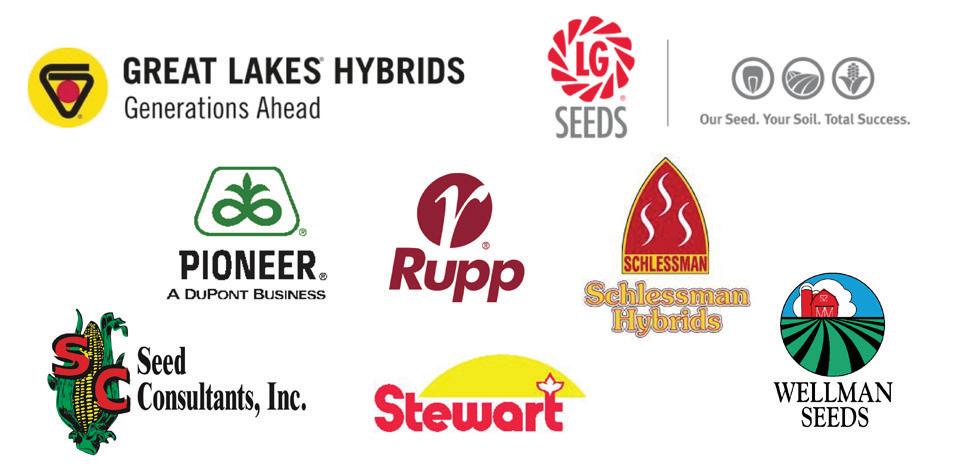
When you join OSA, you will also become a member of the American Soybean Association and enjoy additional benefits. Check www.soygrowers.com for an updated list and instructions for redemption
Name:
Farm/Company:
Address:
City: State: Zip:
County:
Phone:
Email:
Payment Information:
Fax:
r 3-Year ($205) r 1-Year ($80) r Lifetime Membership ($1000)
r Check this box if you do not want your membership dues to go toward the Ohio Soybean Political Action Committee (PAC)
r Check enclosed payable to: Ohio Soybean Association
r Credit Card r VISA r MASTERCARd
Card No.
Exp. date
Recruited By:
Mail to: Ohio Soybean Association 918 Proprietors Road, Suite A Worthington, OH 43085
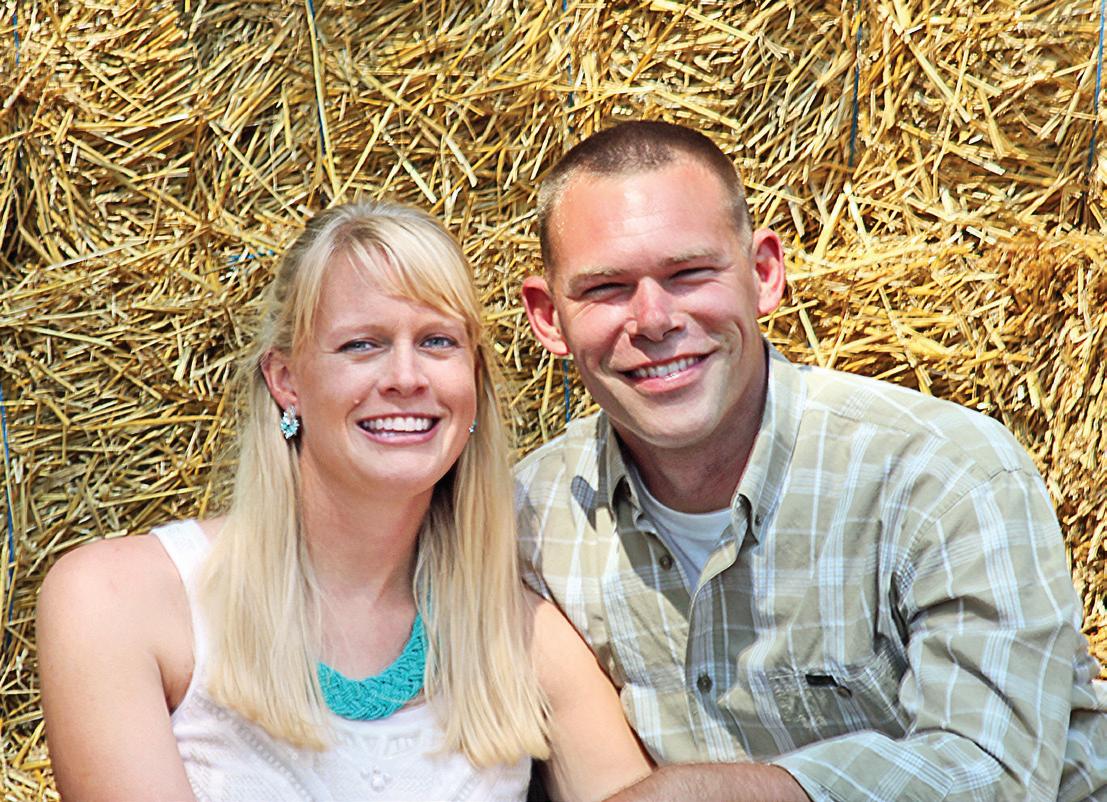
Luke Ryan is an agricultural education instructor; every day in his classroom at Genoa High School he tells a piece of the story of agriculture — he is sharing part of the industry with his students, simply because it is a part of his job. After attending the American Soybean Association (ASA) DuPont Young Leader program, Ryan has a slightly different view on telling the story of agriculture and knows it is also his job as a farmer to make sure he steps up and steps out to share with consumers as well.
The ASA DuPont Young Leader program is a two-part personal and professional development training which, in 2015, selected only 26 participants nationwide to visit DuPont Pioneer headquarters in Johnston, Iowa for leadership and communication training as well as informative sessions about research and development in the industry. The second part is tied in with the national Commodity Classic event and those who attend the full program take with them a broadened perspective on issues facing agriculture and leave with a strong peer network.
Luke & Dayna ryan live in Monclova, ohio, where they raise grain, fresh produce and lambs while sharing their passion for agriculture.
“It was a really great opportunity as a grower, or for anyone involved in agriculture. We learned more about ASA and perspective on the future of the soybean industry and what we need to focus on,” said Ryan.
There is a lot at stake for the industry within politics, foreign relations and acceptance of GMOs. At the Commodity Classic in New Orleans, the ongoing need for farmers to tell their own story was stressed.
“It really dealt with, where do we — as young leaders — need to go and start helping out, where do we need to step up, what do we need to be doing,” said Ryan. “The reality is most farmers do a really poor job of actually communicating and the average American doesn’t understand where their food is coming from.”
Since participating, Ryan has begun incorporating ideas on his farm and in his classroom to connect those outside the industry with where their food comes from. He has challenged students to enter video and essay contests to further consumer education and outreach and they are planning a Food for America project to educate young people locally.
Along with his dad and brother, Ryan operates a diverse farming operation in Monclova, Ohio, growing corn, soybeans, wheat and hay and raising sheep. In
addition, they produce sweet corn, watermelons, muskmelons and a small variety of other vegetables which they sell at their own farm market.
“We want to be more proactive on our farm, by letting people come out, open up a little bit more and tell them — here’s our story, come visit us, come see us, we’re growing healthy food for you,” said Ryan.
Beyond his personal takeaways, it was a bit eye-opening for Ryan to see some of the research being done, and also those who were conducting it.
“As you look around, there weren’t a lot of young faces. I think there is a gap and we need young people to fill these careers in the future and step up,” said Ryan. “We need to continue and increase our research and development and look at what we’re using our commodities for and what else they can do.” u
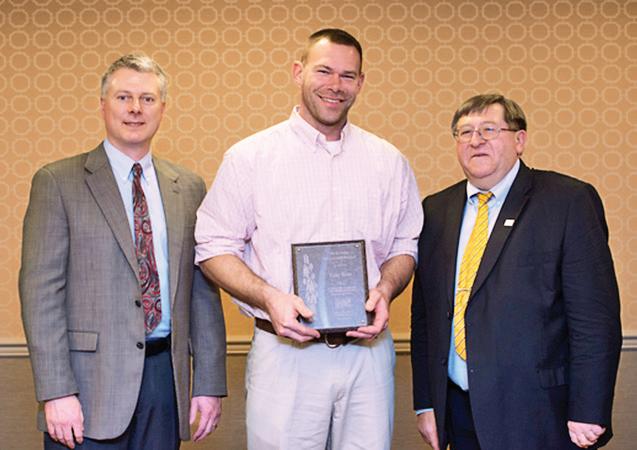
Kevin Diehl (left) Director of regulatory Strategy and Industry Affairs for DuPont Pioneer and richard Wilkins (right), DuPont Pioneer President, recognized Luke ryan (center) of Monclova, ohio, as one of 26 participants nationwide to complete the ASA DuPont young Leader program this year.

• Improve your leadership skills and help advance the soybean industry
• Learn to communicate and influence various groups on important agricultural issues
• Connect with soybean farmers from other states and Canada
The ASA DuPont Young Leader Program is a two-phase educational program for actively farming couples or individuals 21 years and older.
The two-phase training program is as follows:
Phase I – November 29 – December 2, 2016, DuPont Pioneer Headquarters, Johnston, Iowa
Phase II – February 28 – March 3, 2017, San Antonio, Texas (Held in conjunction with Commodity Classic)
For more information about the ASA DuPont Young Leader Program and to apply for the class of 2017 go to: https://soygrowers.com/learn/youngleader-program/
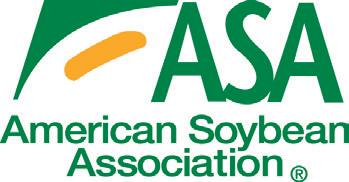
“We had no idea what an impact the ASA DuPont Young Leader Program would have on us. We have sharpened our communication and leadership skills, gained confidence in our ability to advocate, and made lifelong friendships with other farmers across the country. So many new opportunities have opened up to us in the past year, and it all started with the Young Leader Program.”
– Adam and Lindsey Hendricks, KY
The U.S. Environmental Protection (EPA) Agency released the Proposed Rule for the Renewable Fuel Standard (RFS) volume requirements in June, including the volume requirements for biomass-based diesel for 2018. The rule continues to provide modest increases for biomass-based diesel, which according to the American Soybean Association (ASA) and Ohio Soybean Association (OSA) does not capitalize on the opportunity for greater growth, especially considering the existing production capacity, feedstock availability and price, and the growing volumes of imports.
The Proposed Rule calls for 2.1 billion gallons of biomass-based diesel in 2018. The biomass-based diesel requirements for 2016 and 2017 are 1.9 billion and 2.0 billion
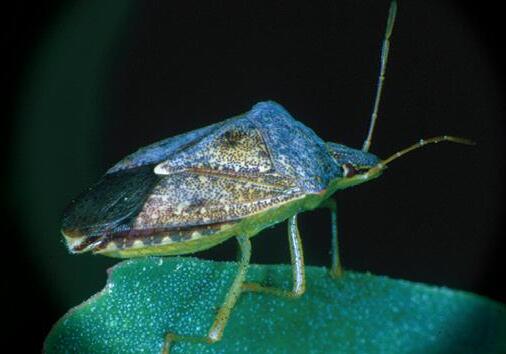



gallons, respectively. The biomass-based diesel utilization in the U.S. was approximately 2.1 billion gallons in 2015 and is expected to exceed that amount in 2016.
The biodiesel industry provides a market outlet for surplus soybean oil as well as animal fats and other renewable agricultural feedstocks; a more diversified energy market; increased domestic energy production; reductions in greenhouse gas emissions; new jobs and economic development; expanded markets; and reduced soy meal feed costs.
Biodiesel is a domestically-produced, renewable fuel that is proven to achieve emissions reductions ranging from 57 to 86 percent and is the first and only Advanced Biofuel to reach commercial-

scale production nationwide. Biodiesel has made up the vast majority of Advanced Biofuel production under the RFS to date. Accounting for approximately half of the feedstock used, soybean oil remains the largest source of oil for biodiesel production.
“As an industry we have always advocated for RFS volumes that are modest and achievable and the biodiesel industry has met or exceeded the targets each and every year that the program has been in place,” said ASA President Richard Wilkins. “The American Soybean Association looks forward, once again, to providing comments to EPA to demonstrate and support the advancement of a more aggressive biomass-based diesel program in the Final Rule.” u
Three







Like diseases and weeds, insects are capable of in icting signi cant, yield-robbing injury on your soybean crop. Keep these tips in mind to stop them before they chew through your tips to help you better control insects





1. Scout early, scout often. Regular scouting will alert you to existing and potential insect problems in your eld. Examine soybean leaves to check for insect damage, and treat each eld accordingly.
2. Know the economic threshold. The economic threshold is reached when an insect population is high enough where treatment results in an economic return. But don’t spray before that population reaches the threshold because it could mean that you won’t get the full return on your input costs. Consult your scouting manual to find the threshold for each harmful insect you discover in your fields.
3. Use a variety of control measures. Insect populations can produce multiple generations in a single growing season, meaning that they’re quick to adapt to changing conditions. Be sure to use a variety of control measures, including biological control, crop rotation, resistant varieties and chemical insecticides.
Visit www.UnitedSoybean.org for more information on insect management in soybeans.

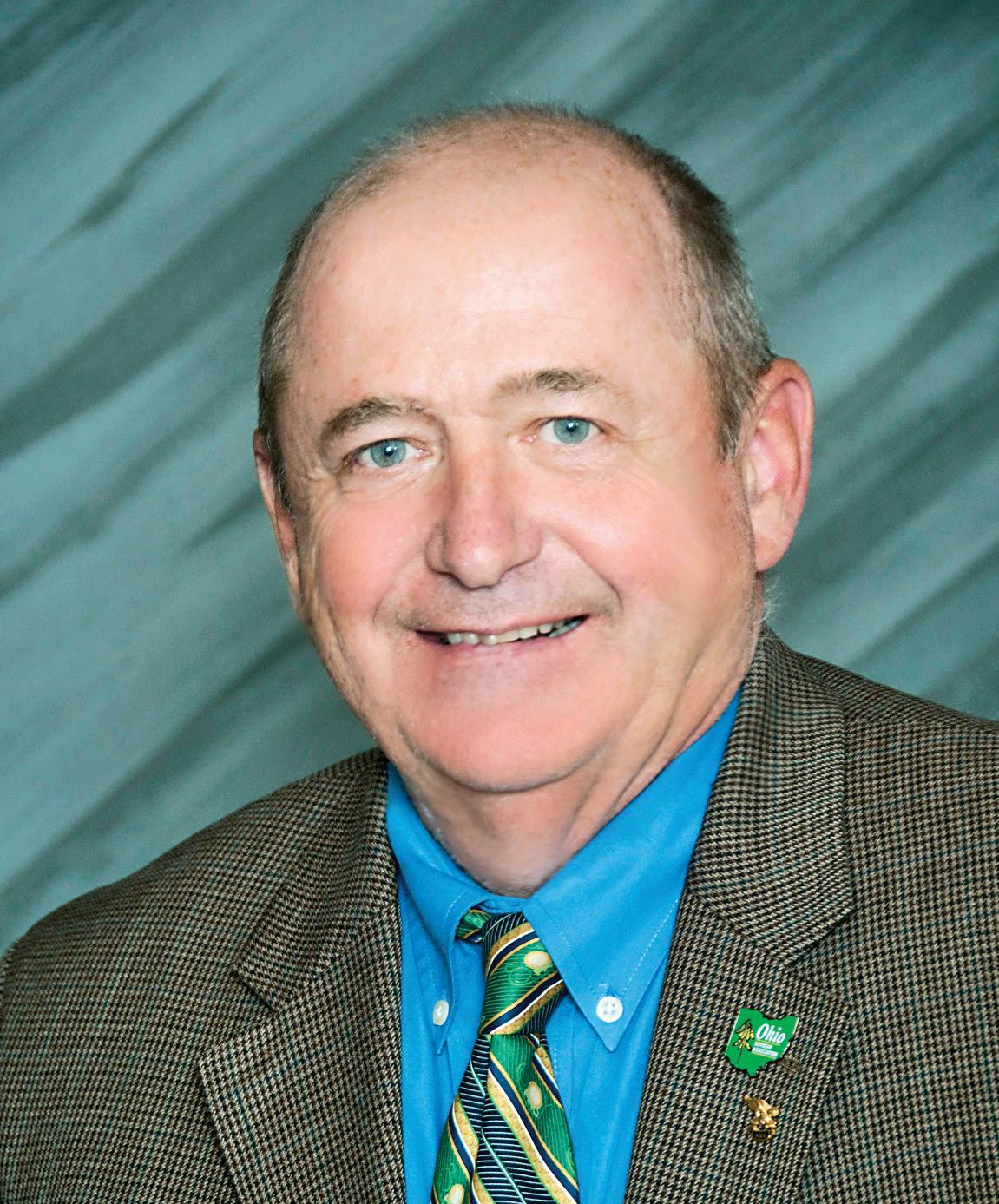
With saddened hearts, the Ohio Soybean Association (OSA) and Ohio Soybean Council (OSC) remember a long-time Ohio soybean industry leader, Robinson ‘Rob’ Wells Joslin, 63, of Sidney, who passed away Wednesday, May 25, 2016.
Rob was a lifelong farmer in Shelby County, Ohio, with his wife Ellen. He began farming full-time after graduating from The Ohio State University in 1975. Rob had a lifelong relationship with 4-H and enjoyed learning parliamentary procedures during his early years at Starting Farmers 4-H Club. Later he enjoyed putting those experiences to work in his endeavors with the soybean associations.
Rob was an active member and past officer in OSA and the American Soybean Association (ASA) serving as President and Chairman of both organizations over the years. In addition to being OSA and ASA President and a member of numerous committees, Rob served on the OSA
executive committee as secretary, treasurer, vice president, president and chairman. He was a dedicated supporter of ASA’s World Soy Foundation and also served on the board of the United States Soybean Export Council (USSEC), including one year as board secretary. Rob was a member of the Farm Foundation NFP and was currently a Trustee at Edison State Community College. He had served as a zoning officer for Clinton Township. He was currently a member of OSA, Ohio Corn Grower and Wheat Growers Association, Ohio Farm Bureau, a lifetime member of Shelby County OSU Alumni and Sidney Rotary Club, and member of the Sidney Moose, Elks and VFW. He enjoyed sailing and riding his ’85 Harley FX. Rob is survived by his wife Ellen, along with daughter, Gail Elizabeth
Joslin of Wilmington, N.C., one brother, William “Woody” Joslin and wife Ann of Maplewood, and one sister, Mary Ellen Drees of Tavares, Fla. u
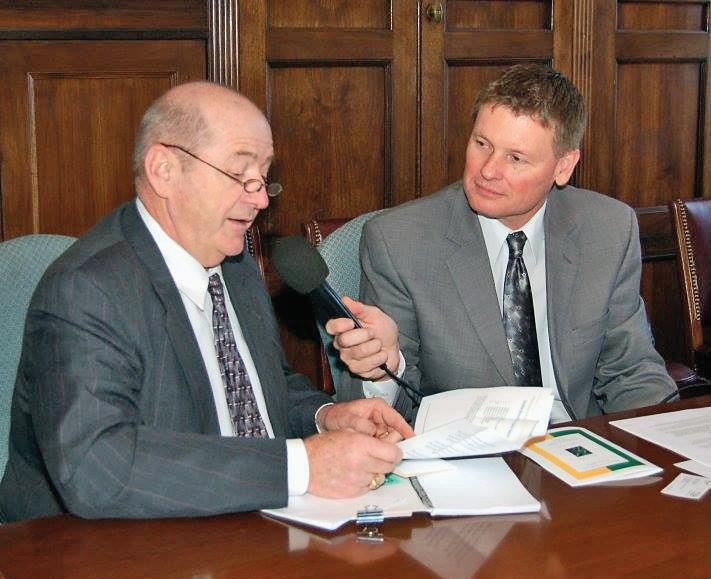
rob Joslin (left) was a dedicated supporter of ASA’s World Soy Foundation and also served on the board of the United States Soybean e xport Council (USSeC), including one year as board secretary.
Rob was active at ASA and OSA and served as President for both organizations
Rob made a big impact on the soybean industry and many growers, leaders and friends shared their memories and kind words to honor him on ASA’s Facebook page:
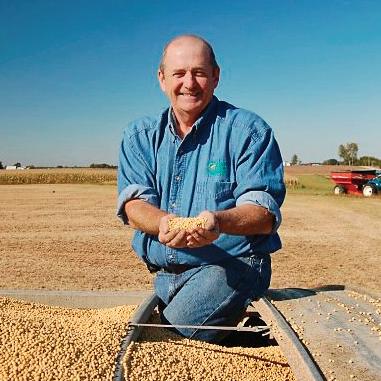
“This man started out being my mentor when I became an ASA director and ended up being a great friend,” said Bob Worth.
“Rob was always such a wonderful inspiration and advocate for the Young Leader Program. My deepest sympathies to Ellen and the rest of his family,” said Michelle Beck Siegel.
“So sad to learn of Rob’s passing. One of the leaders always willing to give advice or ask for advice. Very humble man in best sense of the word,” said Gary Joachim.
“The ag community lost a great leader. Our prayers extend to the entire Joslin family,” said Jeff Wuebker.
Afarmer must be resilient; every day their livelihood is impacted by factors beyond their control. There are long hard days spent fighting the weather to get seeds in the ground, constant monitoring of grain markets to leverage income potential, and many young farmers have a family whose needs are always in the back of their mind.
Jason Putt, of Huron County, has that resilience; and a spirit which is not easily broken. As a farmer, and a single father, he knows what it takes to overcome difficult situations and step up to new challenges, leading him to be named as a Beck’s Young Farm Leader — a program that celebrates young farmers who are poised to become leaders for the next generation.
“There are new and different trials facing agriculture every day. We need young farmers who are willing to accept the challenges that come with the industry and work hard to maintain a positive future for agriculture,” said Bruce Kettler, Director of Public Relations at Beck’s Hybrids.
Jason was born into farming and grew up working on the farm alongside his dad, Tom, who thought it was best to learn by doing. At the age of 12, Jason was sent to see his first landowner about sharecropping 3-4 acres. Being in charge of the farming and management on that small scale was the beginning of a solid foundation that has grown to an operation of more than 3000 acres between Jason and his dad, growing a combination of corn, wheat and soybeans.
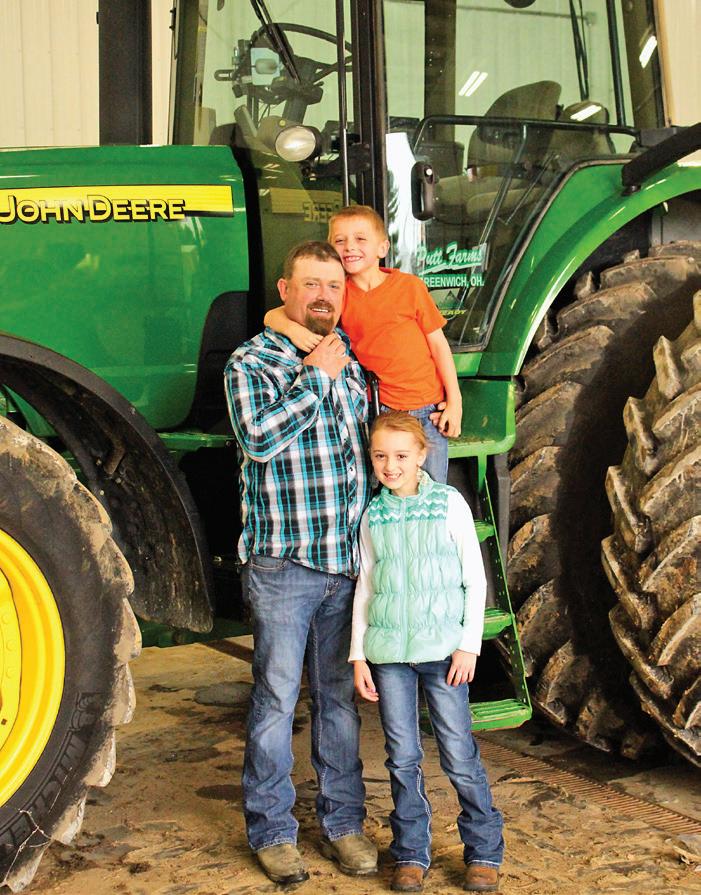
For Jason Putt, and his children, Hayley and Jacob, farming is a family affair. They spend many days together in the tractor or the shop on their farm in Greenwich, ohio.
Today’s challenges for the Putts include being vigilant about resistance, aware of both international and domestic demands and maintaining profitability. In addition, the Putts handle a majority of their farm drainage and ditching projects themselves and have started exploring cover crop opportunities.
“We’ve seen some damage from marestail on our farm and we’ve gone back to some conventional tillage; we’re trying to limit our use of herbicides to help curb resistance,” said Jason. “It’s also challenging to be profitable. We’ll see a nice rally in the soybean market and

think things are going to be a little better, but then it rains every day and takes away yields, taking profits back down even with the higher prices.”
His early experiences have also allowed him to realize the importance of education outside of the classroom.
“Education is especially important for farming and business aspects,” said Jason. “I believe much of what kids do in school now teaches them to get a job, but they’re taught to live within that job. They’re not taught how to run a business or go after those bigger kinds of dreams.”
After high school, Jason attended the University of Northwestern Ohio where he earned a degree in Diesel Technology and then worked in construction for several years before returning to the farm. Now, he mentors high school students enrolled in diesel technology programs at local vocational schools to help them gain experience and learn about the agriculture industry.
While serving as a mentor allows him to have a small impact in his community, Jason’s main focus for the future is his children. Four years ago, his wife Kelly lost her two-year battle with cancer and Jason became a single father to Hayley and Jacob, who are now nine and seven years old and spend a majority of their time right beside their dad on the farm.
“Our situation is different compared to what I see with my friends; most kids are with their mom more and it’s exciting to ride in the tractor with dad. But my kids get off the bus and they’re in the tractor doing homework, it’s a different scenario,” said Jason. “I try to monitor that and make sure it’s not to the point where they don’t like farming because of the situation.”
For now, the whole family is enjoying the farm life and recently built a small barn to add some livestock as 4-H was added to the
routine this year. Jason also has plans for himself to get more involved and has his sights set on some leadership roles in the community once the time is right.
“I would like to get involved more as time allows. I want to become more educated on the political aspects of our industry and someday travel to D.C. and talk to those involved in the decision making,” said Jason. “There are a lot of challenges that come with farming, but when everything’s going right, you feel like you’re on top of the world.”
“We’re happy to honor Jason as a Beck’s Young Farm Leader and we’re eager to see how he continues to grow the farm, raise his family and make an impact on the industry,” said Adam Graham, OSA president and soybean farmer from Logan County. “His determination to be successful and concern for the young people who will be joining our industry make him a leader. We encourage more farmers to nominate themselves or someone they know to be a Beck’s Young Farm Leader so we may continue honoring outstanding young farmers.”
Interested in applying or nominating someone for the Beck’s Young Farm Leader Program? Visit www.soyohio.org/becksyoungfarmleader u
Build Endurance for Commodity Cycles
HOTEL INFO
Fairmont Chicago Millennium Park 200 North Columbus Drive Chicago, Illinois 60601
312.565.8000
Special Ag Summit Room
Rate: $173/night. Cut-off for room rate is November 21, 2016. Reference DTN to receive the special rate. To reserve your room online, link to the hotel site from: dtnagsummit.com
REGISTRATION
Book by November 21 to receive our early-bird discount!
Early birds: $550
Guest evening rate: $225
Group rate: (four or more) $500
Regular rate: $650
Explore Chicago! Guest Tour: $155
Hosted by:

Re-energize your business opportunities at DTN/The Progressive Farmer 2016 Ag Summit December 5-7 in Chicago. You’ll hear the latest economic, weather, marketing, and financial insights in our industry. Surround yourself with hundreds of upbeat peers and problem solvers — and go home with a vision for managing today’s cycles.
IT’S TIME TO
• Learn how to execute flexible marketing plans
• Hear how high-profit farms tap technology
• See what lenders expect on the credit front
• Gauge where land markets are headed next
• Get a post-election outlook on farm policy
2016 AG SUMMIT SCHEDULE OF
SUNDAY, DECEMBER 4
PRE-EVENT OPTIONS
DTN University: Tax Solutions to Enter and Exit Ag
10-Year celebration reception with ag’s most awarded Editorial Team
MONDAY, DECEMBER 5
7:30 a.m. Registration 7:30 a.m. Early Bird Profit Sessions/breakfast
12 p.m. Lite lunch with the sponsors
1 p.m. Ag Summit general session
6 p.m. Dinner at Fogo de Chão
TUESDAY, DECEMBER 6
7 a.m. Breakfast buffet roundtable discussions
8:30 a.m. Ag Summit general sessions
12 p.m. Plated luncheon
1:30 p.m. Ag Summit breakout sessions
5:30 p.m. Reception with the sponsors
WEDNESDAY, DECEMBER 7
7 a.m. Breakfast buffet roundtable discussions
8 a.m. Ag Summit general session 12 p.m. Adjourn
Arecent study released by the University of Michigan has received significant attention. Ohio Corn & Wheat and the Ohio Soybean Association have major concerns about the unrealistic, one-sizefits-all approach of the study and the calls for additional regulations.
economic impact of grain farming in Ohio, and the need to grow food for a growing population.
The study relies on computer simulations that apply blanket practices over the watershed which is unrealistic and impractical. The study did not take into account current adoption of conservation practices or the fact that some practices work best in certain geographies. In order to achieve real success, farmers need to
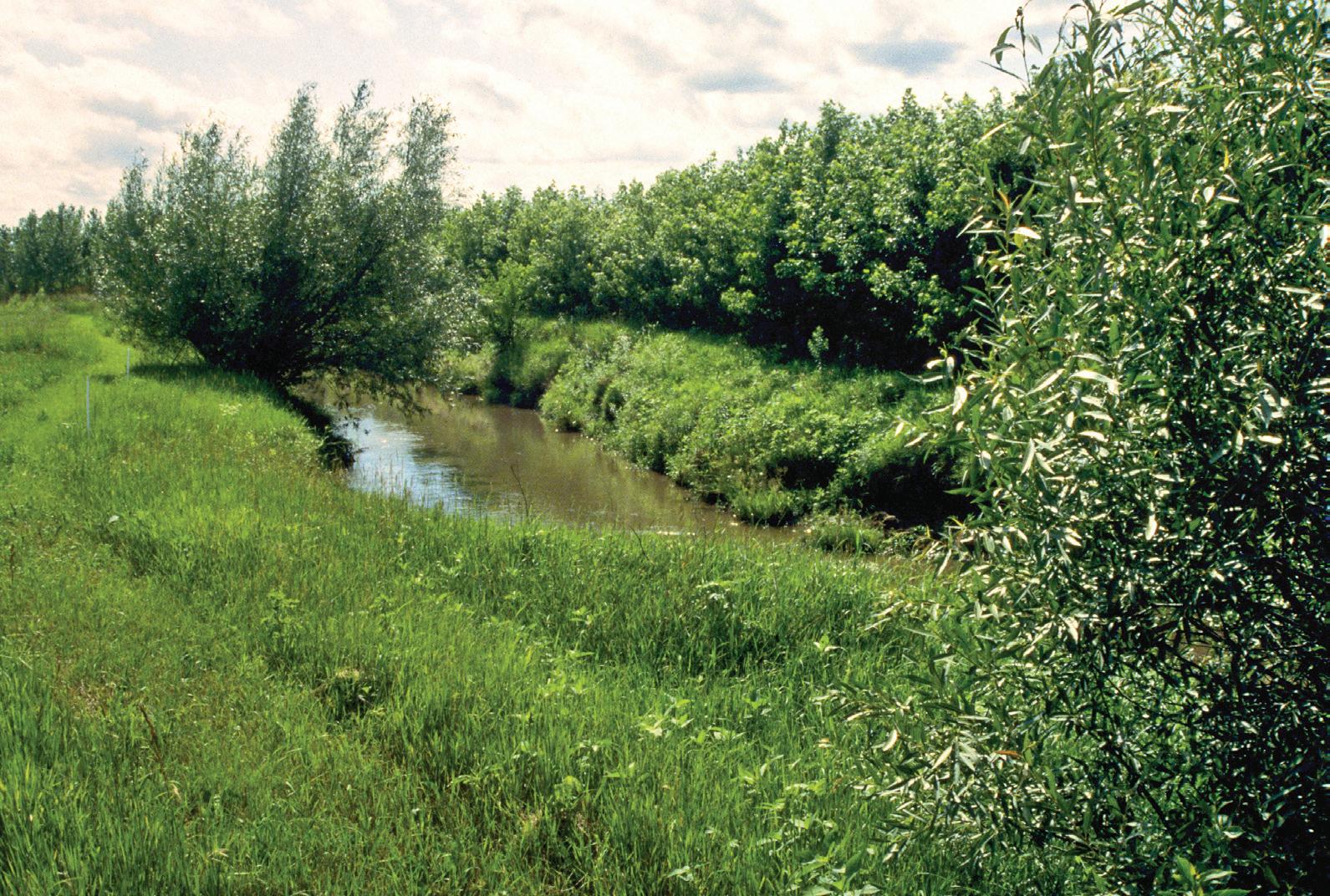
The study’s authors also charge that Ohio farmers will not voluntarily adopt practices necessary to protect water quality. We know farmers have already done so.
We are very disappointed that a representative of The Ohio State University (OSU), who co-authored the study, stated that the ‘most promising’ scenario was to reduce food grown in our state by eliminating farmland equal to the size of Dayton, hurting many small family farms. This is unrealistic, disregards the positive
be able to customize their conservation choices to what fits best for their farm. Farming is not a one-size-fits-all practice.
With support from farmers, Ohio has adopted unprecedented mandatory policies, such as a fertilizer applicators’ licensing program, and is leading the country through cooperation among stakeholders and a proactive approach toward tackling this challenge.
A survey of Ohio grain farmers shows an 88 percent increase in farmers adopting grid sampling to test their soil and a 184 percent increase in the awareness and adoption of the 4Rs of nutrient management (right source, right rate, right time, right place) in only the past two years. Farmers currently implement multiple practices on their farms, yet the scenarios in the study only account for a few of the options available.
Through the hands-on work of Dr. Elizabeth Dayton, a researcher with OSU, we are gaining invaluable insights from real farms that take all practices into account. Her research shows that farmers are taking the right first step, and there is tremendous opportunity to make additional voluntary changes that will reduce runoff.
Sustainability is more than just environmental quality. It’s about finding the right balance of environment, economics and a reliable food supply. We need to take a measured approach to solving this challenge and not waste time and resources on studies that do not yield information that is applicable to real farms. It is also foolish to recommend policy changes without on-farm data.
We all share the same goal of reducing the impact of runoff on Lake Erie. Farmers have repeatedly shown through their actions and their funding priorities that they are focused on this issue. Research, modeling, and asking the right questions can lead to solutions, but it must be based on the changing conditions that challenge farmers every single day.
Ohio grain farmers will continue to champion reasonable and responsible solutions to preserve and improve water quality. u
JULY 27 - AUG. 7, 2016
Saturday, August 6th, 2016

This voucher allows one FREE admission per household to an Ohio soybean farmer or an Ohio Soybean Association member, and $4 admission to each family member in their party on Ohio Soybean Day at the Fair, Saturday, August 6th, 2016.
Code: OHIO SOYBEAN 8-6-15
The Ohio Soybean Council (OSC) has partnered with the Ohio State University researchers to bring the latest and most up to date information about soybeans in Ohio. To get the latest information about scouting for diseases, pests, and weed infestations this growing season, visit soybeanrewards.org
Brought to you by Ohio soybean farmers and their checkoff.

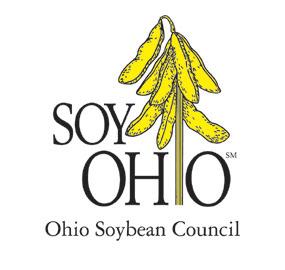
ADOPT THESE BEST PRACTICES TO MITIGATE RUNOFF
REMEMBER
Use fertilizer incorporation techniques like banding and injecting
Understand soil composition to provide guidance on the amount and type of fertilizer needed for specific crops
Erosion Control Matters
Surface runoff is the largest contributing factor to soil erosion leading to loss in nutrients, and contributes the highest concentration of phosphorus in runoff.
Is Tile Runoff the Problem?
No. Research shows tile drainage mimics a filtration system reducing soil erosion, preventing the loss of nutrients, and reducing concentration of phosphorus in runoff.
On average tile drainage reduces the loss of phosphorus found in water runoff by 21% compared to surface runoff.
Runoff spikes are caused when gully washer rains happen after fertilizer application and/or major soil disturbance (tillage). Incorporation as part of a conservation tillage program has the potential for large reduction in overall phosphorus runoff risk.
Research shows an average phosphorus runoff concentration reduction up to 92% due to incorporation.
There isn’t one solution for runoff prevention–it’s about finding the balance of soil type, drainage, fertilizer incorporation, erosion control and other best management practices.
Matching
Research conducted by The Ohio State University and the U.S. Department of Agriculture

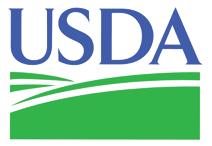
Celebrating 50 Years Celebrating 25 Years
The year 2016 marks the 25th anniversary of the Ohio Soybean Council (OSC) and soybean checkoff and the 50th anniversary of the Ohio Soybean Association (OSA).
OSA was founded in 1966 to provide leadership for Ohio soybean farmers in promoting effective policies and legislation to ensure a growing and profitable soybean industry.
Since 1991, OSC’s vision has been to assure the longterm viability of Ohio soybean farmers. OSC invests soybean checkoff funds to maximize farmer profit opportunities.
To commemorate both anniversaries, the Ohio Soybean News will publish a special series that recounts the story of soybeans in the U.S. and Ohio, as well as reflects on the notable moments in the history of OSA and OSC.
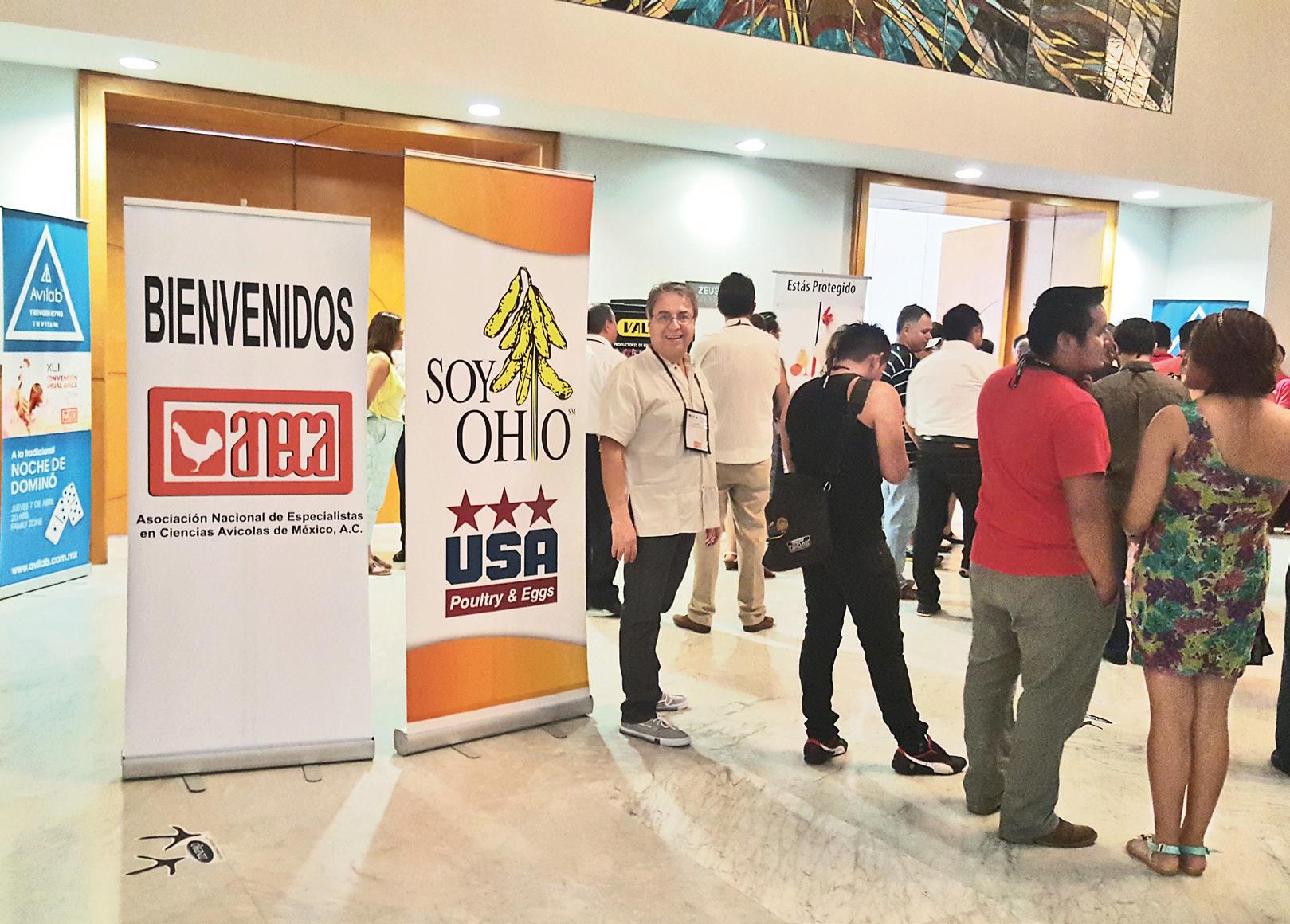
As a new decade and century began in 2000, USDA statistics show the state of Ohio ranked in the top 10 in the country for not only growing soybeans, but also corn, oats, winter wheat, sweet corn, tomatoes, cucumbers, grapes, strawberries, maple syrup, poultry, pigs and dairy products. Even pumpkin records were smashed as Christy Harp of Jackson Township won the Ohio Valley Giant Pumpkin Growers annual weigh-off in 2009 with a world record 1,725-pound pumpkin.
“Ohio farmers were, and still are, very diversified farmers and an important link in the state’s agriculture value chain,” said John Lumpe, who served as the Ohio Soybean Association (OSA) and Ohio Soybean Council (OSC) executive director from 2004 through 2009. “The soybean farmers on the association and checkoff boards during that decade were very visionary. They looked for projects to invest in that would provide long-term returns on investment, rather than funding only repeatable activities every year.”
For example, Ohio soybean farmerleaders at the time chose to concentrate on investments in one or two key foreign markets, rather than trying to serve all overseas customers.
“Japan and China were the primary focus of our attention. The board felt a greater impact could be made by not spreading dollars too thin,” said Lumpe. “The Pacific Rim and China offered growing middle class populations who were demanding more and better protein.”
According to the U.S. Soybean Export Council (USSEC), about 1.55 billion soy consumers live in North Asia now, where the middle class is improving and diversifying its diet with increased consumption of vegetable and animal proteins and vegetable oils. In China alone, the goal is to move 300 million consumers from rural to urban lifestyles and incomes in the next 15 years.
Such trends led to increased soy imports, said Lumpe, as Chinese consumption of animal protein and
The ohio Soybean Council helps sponsor events such as this USAPeeC seminar held in Mexico. the goal is to increase exports of U.S. soybean mealfed poultry products here and around the world. Mexico is the largest export market for U.S. chicken and turkey.
vegetable oil among urban consumers is double that of rural consumers. China has grown from a minor export market for U.S. and Ohio soybeans in 2000 to the largest export market today. In fact China is a larger export market than all others combined, and approximately one quarter of the entire U.S. soybean crop goes to China.
OSA and OSC hosted trade missions to and from China to put potential buyers and sellers in contact with each other, and worked with other state and national organizations to build demand for our soybeans.
Ohio soybean farmers also worked with international marketing consultant Gunnar Lynum to help join buyers and sellers in Pacific Rim countries during the decade.
“Demand from the Pacific Rim was coming on strong during the decade, along with China and Japan,” said Keith Kemp, OSC board member and soybean farmer from Preble County who also serves on the United Soybean Board’s (USB) sustainability and market access committees. “We tend to forget that the European Union is also a strong market for our soybean meal. We export more than 50 percent of our soybeans, so supporting promotion and education overseas remains important.”
Kemp anticipates demand will continue to grow. “Ohio soybean farmers must stay focused and be flexible in meeting various buyer needs, whether that is supplying the non-GMO market in these countries or expanding our high-oleic soybean production for the future.”
U.S. farmer support of foreign buyers dates back to the 1950s, when the American Soybean Association (ASA) staffed offices abroad to promote U.S. soy and educate potential buyers, a network and organization then known as ASAInternational Marketing (ASA-IM).
Creation of the national soybean checkoff allowed for more resources to be devoted to increasing soybean exports. Checkoff dollars were invested by USB and state soybean councils, including Ohio, along with investment of cost-share funding provided by USDA’s Foreign Agricultural Service and cooperating industry.
USSEC succeeded ASA-IM in the 2000s. It incorporates the expertise of the soybean industry and state soybean groups like Ohio to broaden promotional support for marketing efforts in more than 80 countries. USSEC’s mission then and today remains to increase knowledge about the nutritional and environmental benefits of U.S. soybeans at all levels of the soybean value chain, and to increase demand for U.S. soybeans and soy products, starting with a science-based technical foundation.
“When we began to invest in USSEC’s programs, we focused on projects that promoted Ohio and U.S. soybeans, meal and oil into existing and new markets,” said Lumpe. “We also helped with projects that created demand for Ohio food grade soybeans since that was always a strength of Ohio farmers.”
Kemp has witnessed the promotional work firsthand in China. “It is amazing to go there and help them understand the value of our soybeans, meal and oil. USSEC is a critical link for us to connect with buyers and build relationships so we stay ahead of South America,” he said.
Ohio soybean farmers also began to fund overseas promotions for U.S. meat and poultry exports during the 2000s, primarily through the U.S. Meat Export Federation (USMEF) and U.S.A. Poultry and Egg Export Council (USAPEEC). The goal was to sell more Ohio commodities.
USMEF values its relationship with Ohio soybean farmers. “We greatly appreciate the outstanding support we receive,” said Dan Halstrom, USMEF senior vice president for global marketing. “Their investment allows USMEF to develop new international destinations for U.S. red meat, and to defend our existing share in key markets such as Japan, Mexico and South Korea. It’s a great example of how different sectors of American agriculture can come together for a common goal that helps make all producers more profitable.”
Greg Tyler, USAPEEC vice president for international marketing, shares similar thoughts. “OSC has been generous in its support of our efforts to increase exports of U.S. poultry products, especially in Mexico, which is our largest export market for chicken and turkey,” he said. “OSC has
ohio soybean farmers help support activities such as this seminar in Mexico targeted at increasing exports of U.S. poultry products.


helped to fund a program in Mexico aimed at creating new value-added retail products made from U.S. chicken leg quarters and breast trimmings.”
These programs have shown measurable results. In 2014, Ohio soybean production was 254.1 million bushels, of which about 10.2 percent, or 25.8 million bushels, were directly used by the poultry and egg production sector in the state. Ohio’s poultry and egg exports translated into 2.4 million bushels of soybeans the same year, of which 30 percent were exported to Mexico (38.6 million soybean bushels). In other words, more than 710,000 soybean bushels from Ohio were exported through U.S. poultry and egg exports to Mexico.
Ohio soybean checkoff funds also have paved the way for opening new markets for U.S. chicken and turkey in other Latin American countries. “For example, OSC helped USAPEEC to bring a trade delegation of meat processors and retailers from Colombia, Costa Rica, Guatemala, Nicaragua, Honduras, Panama and El Salvador to Ohio to visit with poultry producers, including Cooper Farms,” said
Tyler. “Without this funding support, USAPEEC would have been unable to make such important strides in these rapidly emerging markets.”
Just as it made sense to support U.S. meat and poultry export promotions, Ohio soybean farmers also found it necessary to protect the state’s livestock and poultry producers during the 2000s.
In November 2009 Ohioans passed State Issue 2, a constitutional amendment requiring the state to establish comprehensive livestock care standards. OSA played a major role in bringing commodity groups together to create the legislation that formed the Ohio Livestock Care Standards Board. The board went into effect in 2011.
“The Humane Society of the United States (HSUS) was targeting states to get issues on ballots to very specifically direct how farmers could handle animals. Ohio was one of the states,” said Lumpe. “We met as an association and as a checkoff board
to determine how our two groups could work together to formulate a path to success.”
Together with other Ohio commodity groups, Lumpe said they raised $3.5-4.5 million in six months to stave off HSUS and proactively create the Ohio Livestock Care Standard Board.
“It took a constitutional amendment to control our destiny, but we were victorious,” he says.
Jeff Wuebker, soybean farmer from Versailles, Ohio, and past OSA president, presented testimony to state legislators during the discussions. “With livestock as our top customer, I felt there was pressure on us to find a solution,” he said. “Looking back now, if we had not done that, it could have driven some Ohio livestock and poultry producers out of business. Instead new barns are being built. The layer and swine sectors especially got time to sort things out.”
The 2000s were not only marked with these record-breaking activities, but also several other extremes — soybean demand and prices exploded and parts of Ohio were challenged with record flooding in 2007 and record snowfall in 2008. In the next issue, learn how Ohio soybean farmers helped fuel the record-breaking biodiesel industry, as well as helped fund research and discovery to battle emerging soybean production challenges and to develop new varieties.
“The goal has always been to get more dollars back into farmer pockets, and we were successful,” said Kirk Merritt, OSC Executive Director since 2009. “The farmers who served on the boards of the 2000s had good working relationships and good energy. With the decisions they made, OSC made great progress with our efforts, and even had some home runs. It was a good time for soybeans.” u

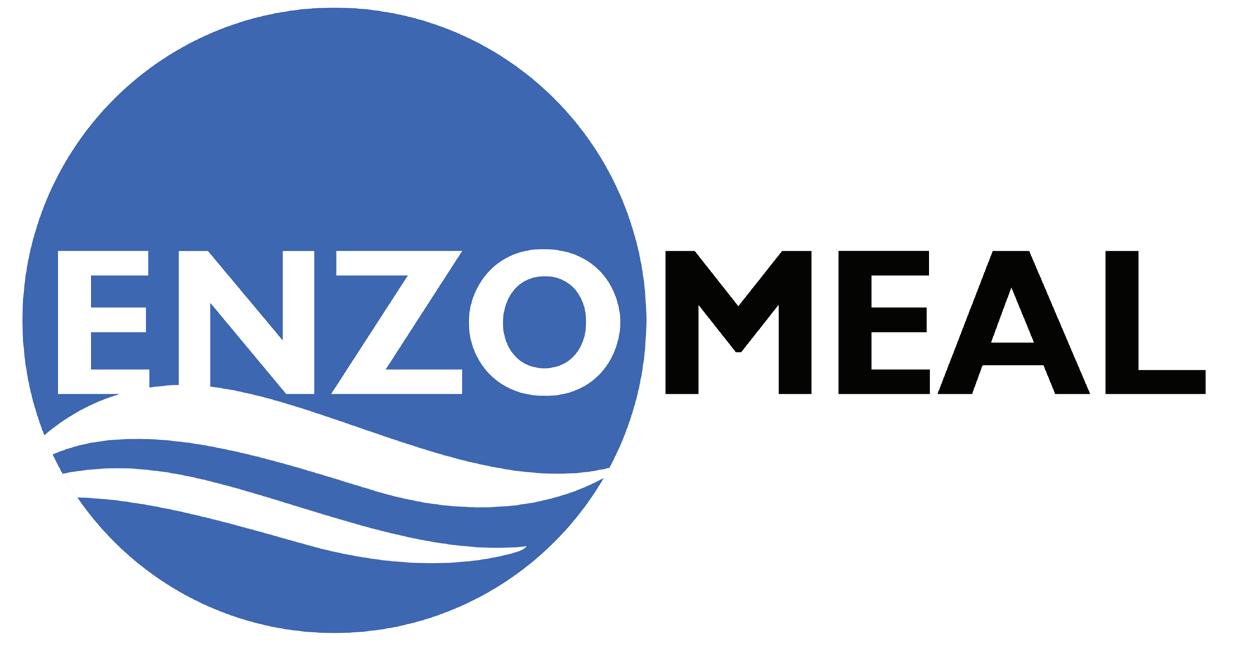
Typically, conversations about underwater soybeans are linked to flooded fields and lower yields after heavy rain; however, the Ohio Soybean Council (OSC) has recently been facilitating a lot of positive discussion for soybeans in an aquatic environment.
Global fish consumption has nearly doubled in the last 40 years, leaving natural fish resources stretched to the limit and the industry turning to sustainable aquaculture or “fishfarming” as a rapidly growing solution. Yet, fish meal remains the primary protein source for farmed fish, with the industry using 120-180 million metric tons each year and demand growing by 10% annually.
The problem is that fish meal contains wild fish and shrimp and circles back to the issue of wild fish stocks being over-harvested. As an alternative, fish farmers are interested in a more sustainable, affordable nutrition source and OSC has introduced EnzoMeal TM as the soy-based solution.
“Soybean meal is already being utilized in fish and shrimp diets, but EnzoMeal utilizes a new process to
remove Anti-Nutritional Factors (ANF) which will allow for better digestion with increased soybean meal content in commercial fish feeds,” said Bill Bayliss, OSC board member and soybean farmer from Logan County.
Conventional soybean meal’s high protein content makes it the
“Soybean meal is already being utilized in fish and shrimp diets, but EnzoMealTM utilizes a new process to remove Anti-Nutritional Factors (ANF) which will allow for better digestion with increased soybean meal content in commercial fish feeds.”
– Bill Bayliss, OSC board member and soybean farmer from Logan County.
best vegetable based alternative to fish meal, conversely it also contains ANFs — including trypsin inhibitors, antigens, phytic acid and oligosaccharides — that interfere with digestion. The newly patented process used to produce EnzoMeal removes ANF substances without disrupting the nutritional value and also boosts protein content. The revolutionary advantage is that it does not compromise amino acid composition.
Traditional inclusion of commercial soybean meal at rates above 15%-25% has resulted in reduced performance of growth and overall health of many high value species. EnzoMeal removes that barrier and is expected to be a breakthrough ingredient for the growing aqua feed industry, allowing for higher rates of soy protein inclusion depending on the tolerance and needs of the species.
Evaluations of EnzoMeal trials with trout, shrimp and yellow perch have shown successful replacement of 50-75% of fishmeal in fish diets and 100% in shrimp. Additional trials set for fall 2016 will verify performance capabilities with salmon and largemouth bass — carnivorous species that have previously had issues with crop-based diets due to the oligosaccharide content.
“There’s great opportunity to expand the ability to farm these popular species and meet the growing global demand for food,” added Bayliss. “Ohio soybean farmers are excited to be part of the solution for an important need in the aquaculture industry.” u

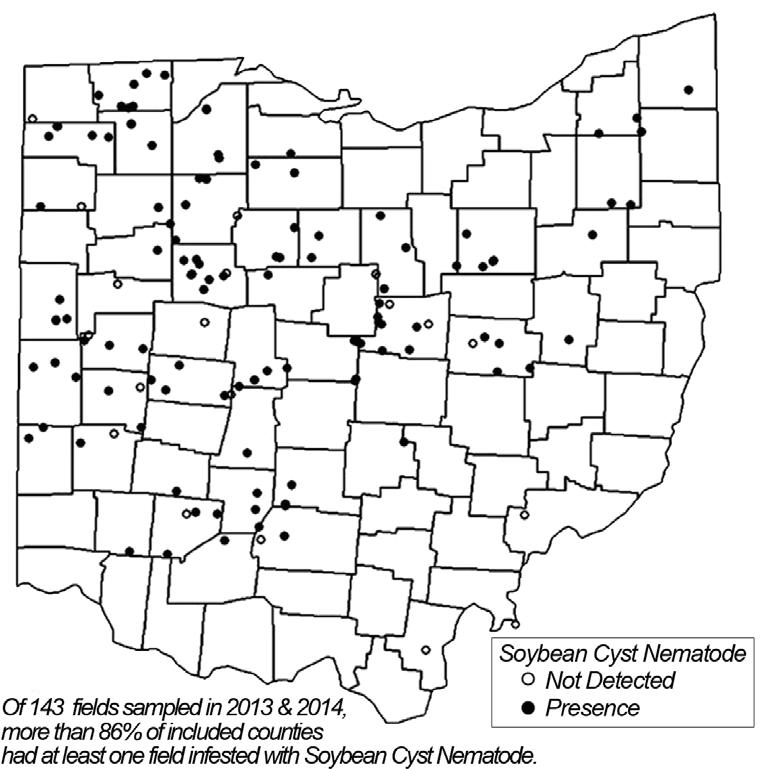
high populations, samples should be taken every year soybeans will be planted. Low populations or clean fields should still be sampled every five to seven years.
▶ A lot depends on soil type, cultivars grown and the rotation used. The more often soybeans are planted, the more often a field should be tested.
▶ Once populations reach high levels, up to 20,000 eggs per cup of soil, it’s very hard to get levels back down to where there is no impact on yield.
Managing populations:
As July gives way to August families are savoring the last few weeks of summer before school begins, gardens are bountiful, wheat harvest is done and farmers are looking at how their crops are filling out. While scouting methods differ for each farm, the issues they look for are quite similar. Dr. Anne Dorrance, plant pathologist and Andy Michel, entomologist, from The Ohio State University College of Food, Agricultural, and Environmental Sciences offer some tips and an outlook on potential conditions this year:
Soybean Cyst Nematode (SCN)
What to look for, where to look:
▶ If there is a potential problem field, dig up plants in July — fields with a very high population will have identifiable females on the roots visible as small cysts about the size of a pinhead; and will be either white or tan depending on the maturity.
▶ Check areas that always have a yield hit or anywhere sudden death syndrome shows up by the end of July. Beans that are usually stunted — when it’s not from flooding — or sandier soils tend to have higher populations.
What if you find them?
▶ Monitor the population — the best way is by sampling. If there are known
▶ SCN is in Ohio, and it’s probably in all of the fields even if it goes unnoticed. Normal crop rotations can help keep populations at a low threshold.
▶ It can become necessary to plant a resistant variety, but it is a step that needs to be taken with care. Once a variety is planted SCN will start adapting to that resistance and create larger issues; we really need to preserve the resistance.
What might pop up? Should you spray?
▶ Watch for signs of frog eye leaf spot and soybean rust. While soybean rust has not been found in Ohio yet, monitor how close it gets and if there are predictions for hurricanes which may help spread the disease.
▶ If predictions are correct and the summer is dry, fungicide should not be applied. Not only is it inefficient, but it actually enhances conditions for mites which are controlled by fungi. Fungicide application in a dry year can easily lead to more and more spider mite flare ups.
When do they have an impact?
▶ Green and brown stink bugs will begin to appear in mid- to late-July as the adults fly into fields and start to lay eggs. A few stink bugs at this point is not likely to become an economic situation to impact yield.
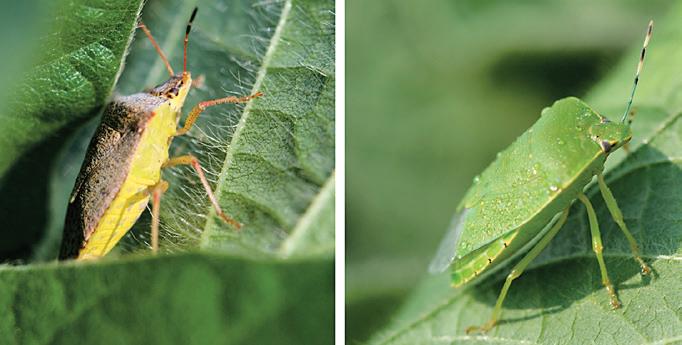
Both brown and green stink bugs may be found in ohio soybean fields in July. The general threshold is two bugs per foot of row to have an economic impact on yield.
▶ If there are a lot of adults and egg masses can be found, those fields need to be revisited about a week later. Once they are in the fields, they are typically there a long time.
▶ Eggs will take a couple weeks to hatch, and then there can be significant pressure from stink bugs, and with a dry forecast they stand to be the biggest issue this year.
Should you be worried?
▶ With a dry forecast, aphids are a low threat this year, but they should be on the radar for emergence around the second week in August.
▶ Late planted beans may see more of an issue and may see populations reach an economic threshold by the end of August.
Are your beans going to the bugs?
▶ August sees the most pressure from insects when pods begin to fill out. Stink bugs, aphids, bean leaf beetles and other insects look for pods to feed on late in summer.
▶ General economic thresholds are around ten percent of pods being fed on by bean leaf beetles, or two stink bugs per foot of row.
Contact the following field crop extension specialists with questions: Andy Michel: michel.70@osu.edu
Kelley Tilmon: tilmon.1@osu.edu
Anne Dorrance: dorrance.1@osu.edu u
Behind every university research project, publication and field trial on soybeans is a person with a passion and a purpose to make things better for farmers. Someone who is driven beyond a paycheck to make progress and discoveries on their behalf. For Ohio soybean farmers, the driving force behind much of the new and developing information surrounding soybean pathogens is Dr. Anne Dorrance in The Ohio State University’s Department of Plant Pathology.
Earlier this year, Dorrance was selected to be added to a prestigious list and receive national recognition as a 2016 American Phytopathological Society Fellow for her significant contributions to research, teaching and extension efforts.
“It’s very humbling to be named a fellow; it’s the highest award that the society gives. Everybody I admired when I was a student was a fellow,” said Dorrance. “A major contributor to this recognition is due to support; I could never have contributed to the science without farmers telling me what to work on and collaborating efforts or without financial support from the check-off.”
Dr. Dorrance’s work in plant pathology has made her a national and international authority on soybean diseases. Those contributions have had substantial impact for the soybean industry; and the Ohio Soybean Council (OSC) has been fortunate enough to work closely with Dorrance during the 18 years she has been at Ohio State.
“It is a privilege of OSC to be able to work diligently and repeatedly with Dr. Anne Dorrance. Her wealth of knowledge and ambition to continue learning and researching have been tremendously valuable for Ohio’s soybean growers. We are proud of her accomplishments and eager to continue our partnership,” said
Tom Fontana, Director of OSC Research and Education.
Originally from New York, Dorrance’s college education began with Biology and Forestry before she earned an M.S. in Plant Pathology from the University of Massachusetts in 1985. After serving several years as a plant pathologist for the Vermont Department of Agriculture, she earned a Ph.D. in Plant Pathology from Virginia Polytechnic Institute and State University in 1995. She joined Ohio State in 1997 and was promoted to Professor in 2009 where she makes an impact through research, mentoring students and efforts with Ohio State’s extension services.
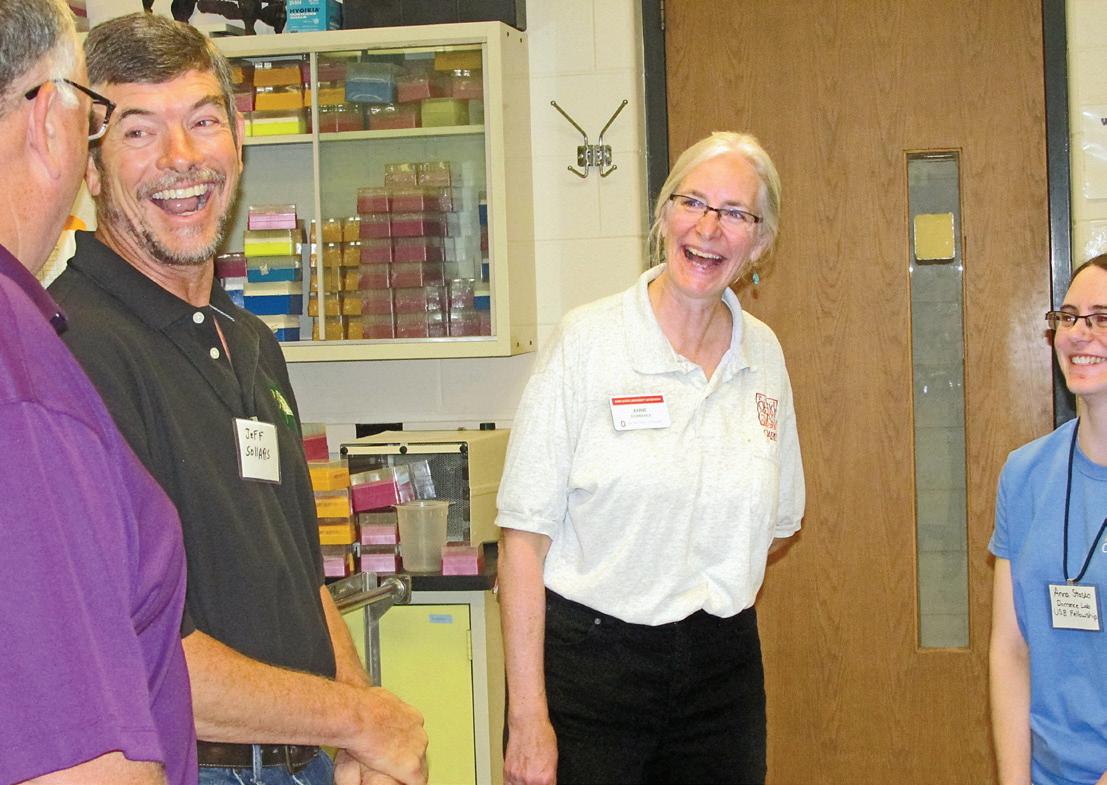
Dr. Anne Dorrance has been an invaluable resource for the ohio Soybean Council and ohio farmers in her role as Professor in the Department of Plant Pathology at The ohio State University.
Significant amounts of research on a wide range of pathogens have been published by Dorrance and her team with a primary focus on Phytophthora sojae and Pythium — both causing root rot in soybeans. Dorrance and her students were the first to characterize complex pathogen populations in Ohio soils that impacted soybean and corn productivity. She has made major breakthroughs in understanding the genes for disease resistance in soybeans and has worked with a team of soybean breeders to release several cultivars with high level resistance to Phytophthora sojae.
Her career is about more than working in a lab and it is evident in the passion she has for the extension component of her position. Most years, Dorrance delivers
more than 20 presentations at state and regional events and in the past 10 years has contributed more than 150 articles to Ohio State’s Agronomy Team Newsletter reaching countless growers, county educators and crop consultants in Ohio and beyond.
Another priority for Dorrance is sharing her knowledge and passion for the industry with students. Twelve M.S. students and four Ph.D. students have earned degrees under her directions with several now holding faculty positions. In addition, she currently has six graduate students and up to six undergraduates working in her program. Her drive to facilitate student learning comes directly from her own awareness of the shortage of broadly trained plant health specialists to take on jobs in the industry in coming years. u

If you ask an Ohio farmer if they have broadband Internet access you will likely get a mixed bag of answers. Some will tell you they have high speed Internet, others will tell you they still use a dial up connection, while others will have no idea whether they do or not. Complicating the issue is the fact that Internet terminology can be very confusing. Bits, bytes, terabytes, upload speed, download speed, etc. are all terms that are thrown around by providers every day (see figure 1). But what do they really mean? Computer file
sizes are quoted in megabytes. Internet download speeds are quoted in megabits. Although they sound similar, the two speeds are not equal. One megabyte equals 8 megabits. A terabyte is equal to one million megabytes. To put that number in perspective, some ultra-high definition drones can generate up to a terabyte of data in an hour. Assuming upload speeds of 25 Mbps that would take almost 87 hours to upload the data to a new location. In addition to multiple definitions for speed, there are also many different Internet connection
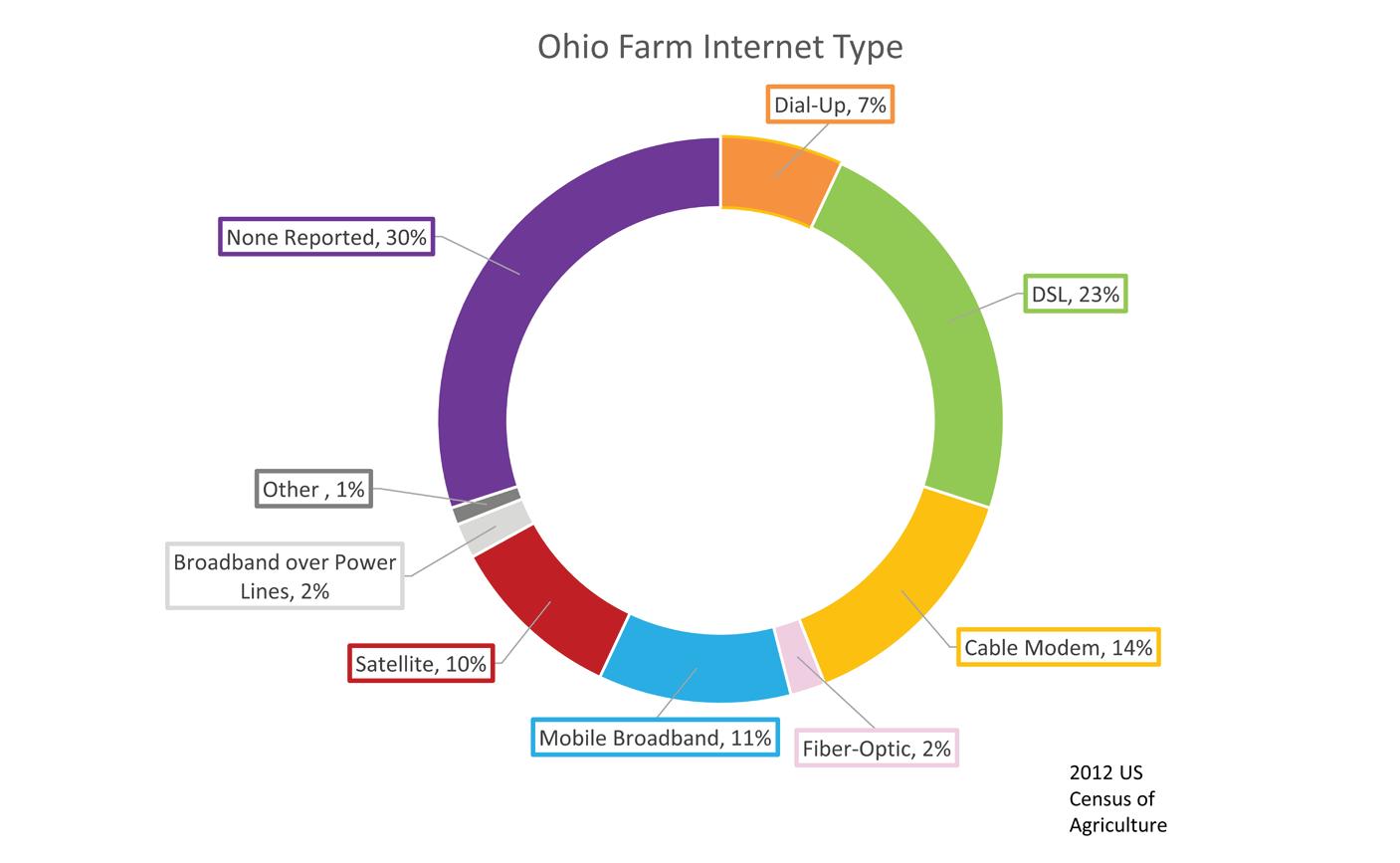
types. Several of them, including dial-up and satellite, are not considered high speed. Ohio farmers use a variety of Internet connections to access and utilize online information (see figure 2).
Figure 1: Definitions
▶ Broadband: Broadband or high-speed Internet access allows users to access the Internet and Internet-related services at significantly higher speeds than those available through “dial-up” services. Broadband speeds vary significantly depending on the technology and level of service ordered. Broadband services for residential consumers typically provide faster downstream speeds than upstream speeds.
▶ High Speed: download speed 25 megabits per second, upload speed 3 Mbps
▶ Megabit: a unit of data size. Equal to 1/8 of a megabyte
▶ Megabits per second (Mbps): measure of data transfer speeds of high bandwidth connections
▶ Megabyte: unit of data size. Used to measure file sizes.
▶ Terabyte: 1,000,000 megabytes
▶ Download/downstream speed: from the Internet to your computer
▶ Upload/upstream speed: from your computer to the Internet
According to the 2012 US Census of Agriculture, only about 68% of farms stated they had access to any type of Internet access.
The Federal Communications Commission defines high speed Internet as that with download speeds of greater than 25 megabits/second (Mbps) and upload speeds of 3 megabits/ second. This is a definition that changed in July 2015 — it used to be defined
as download speeds of 4 megabits per second and upload speeds of 1 megabit per second. So, what does that actually mean? Checking email on one device requires download speeds of 0.5 Mbps, watching YouTube videos requires 0.7 Mbps, watching video steaming (like Netflix) requires 3 Mbps, and high definition online gaming requires 4
Mbps. Although it seems like you may never need anywhere near 25 Mbps, most households have multiple devices that are connected at the same time, including phones, computers, tablets, TVs, gaming consoles and printers. Each of these devices consumes part of that availability. Therefore, the need for speed within homes quickly multiplies.
Aside from the common household uses of broadband, there are many farm activities that rely on it as well. Many farmers use broadband for grain bin monitoring, farm management software, webinars, emails, grain trading, education, fleet management, and many other uses. All of these activities require different levels of Internet speed. As technologies advance and expand in scope, we will need higher download and upload speeds to ensure functionality.
Advertised Speed of At Least
3 Mbps/768 Kbps - June 2015 (2010 FCC High Speed definition)
Advertised Speed of At Least 25 Mbps/3 Mbps - June 2015 (2015 FCC High Speed definition)
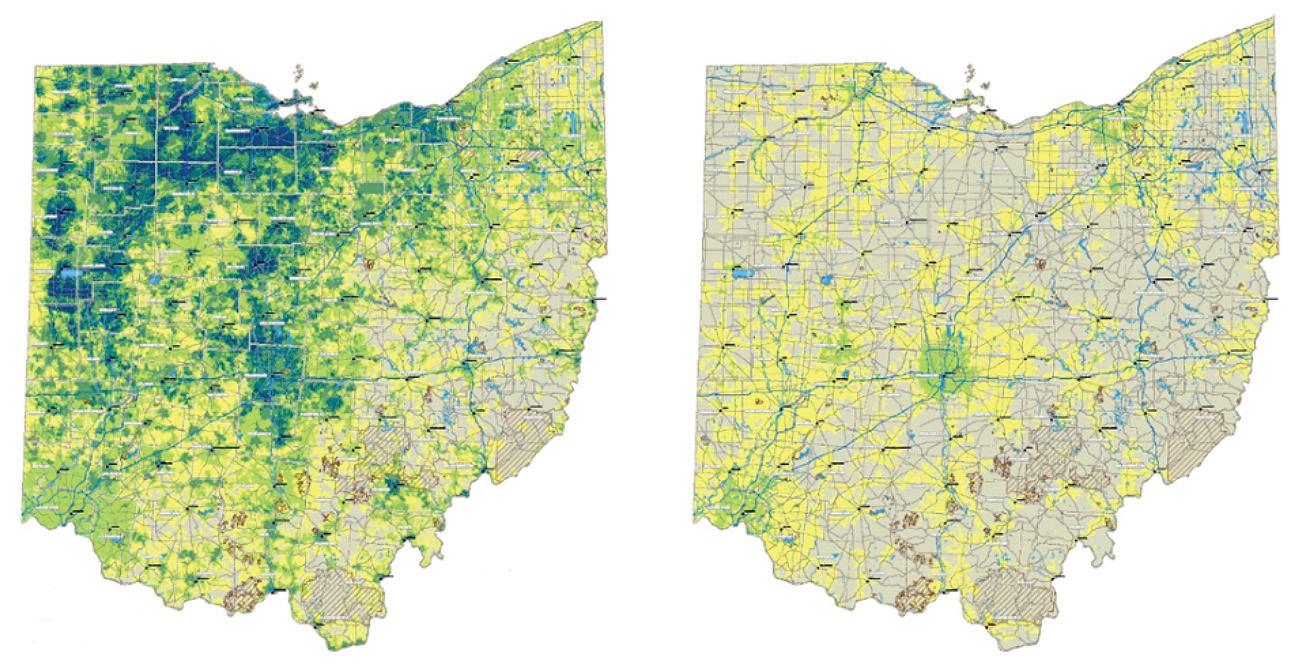
Broadband coverage in Ohio varies significantly based on location. As you would expect, high speed access is
more heavily concentrated around the major cities. Only about 51% of rural residents currently have broadband access. Additionally, there are many more
The lack of broadband Internet providers in rural areas is largely due to the cost associated with building out the required infrastructure. However, rural Ohioans’ Internet service is about ready to see large scale improvements, thanks to a $1.5 billion federal program. CenturyLink, Cincinnati Bell, AT&T, Frontier Communications, FairPoint Communications and Windstream Communications have all accepted funding from the Federal Communication
Commission to deliver or improve broadband services to rural homes, farms and businesses that are not being effectively served. In all, the six Internet service providers have accepted a total of over $58 million dollars from the Ohio Connect America Phase II funding allocation to provide at least 10 Mbps speeds to over 166,000 homes and businesses in rural Ohio from 2015 to 2020. “Access to modern broadband is critical to life in today’s society,” said FCC Chairman Tom
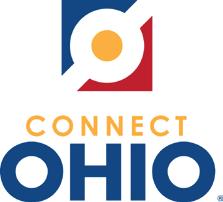
5+ Providers
4 Providers
3 Providers
2 Providers
1 Provider Unserved Areas
access options around the cities as well, especially under the new definition of broadband (25+ Mbps download speed and 3 Mbps upload speed) (See figure 3).
Wheeler, in a statement. “The financial support provided by American ratepayers through the Connect America program is an investment in the future of our rural communities that will pay dividends for all Americans for years to come.” (Columbus Dispatch, August 30, 2015).

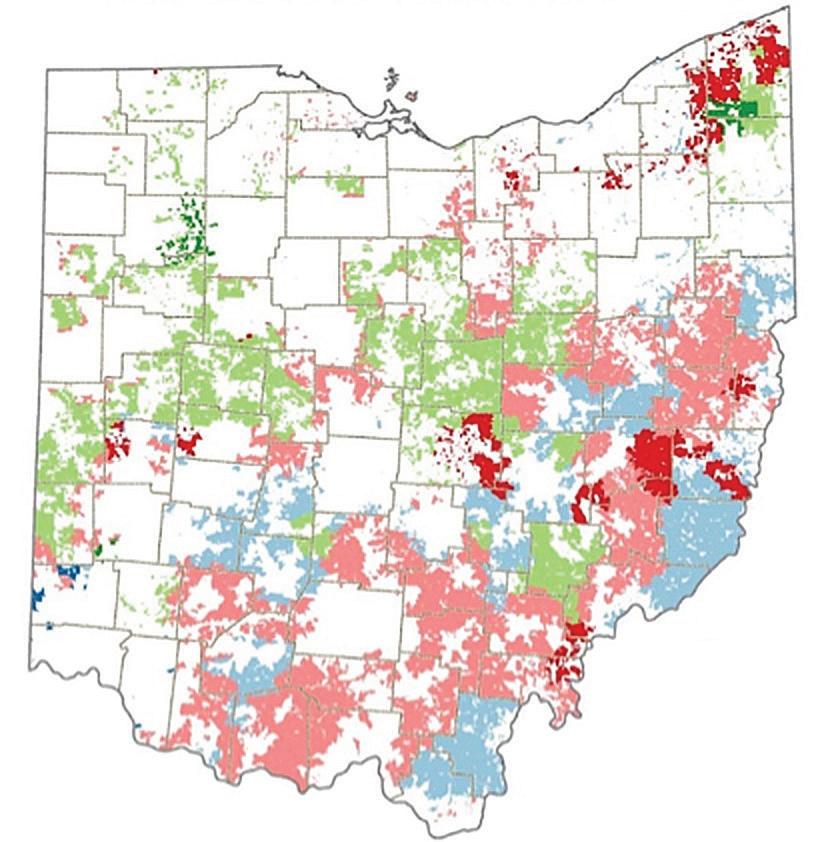
What that means for you is that broadband may be coming to your farm in the near future. (see figure 4). According to the funding guidelines, 40% of the work must be done by the end of 2017, with all of the remaining work to be completed by the end of 2020. This means that within the next 2–4 years, the availability of high speed Internet access on the farm should increase significantly. There are unlimited possibilities of what this access will mean to you and your operation. u
The Ohio Soybean Council (OSC) recognizes that these new technologies provide additional opportunity and concern for growers. Therefore, OSC conducted in-depth research on the current state of digital communication in rural Ohio. Over the next year, OSC’s TechTalk series will take a closer look at issues that are important to you and the future of the industry.


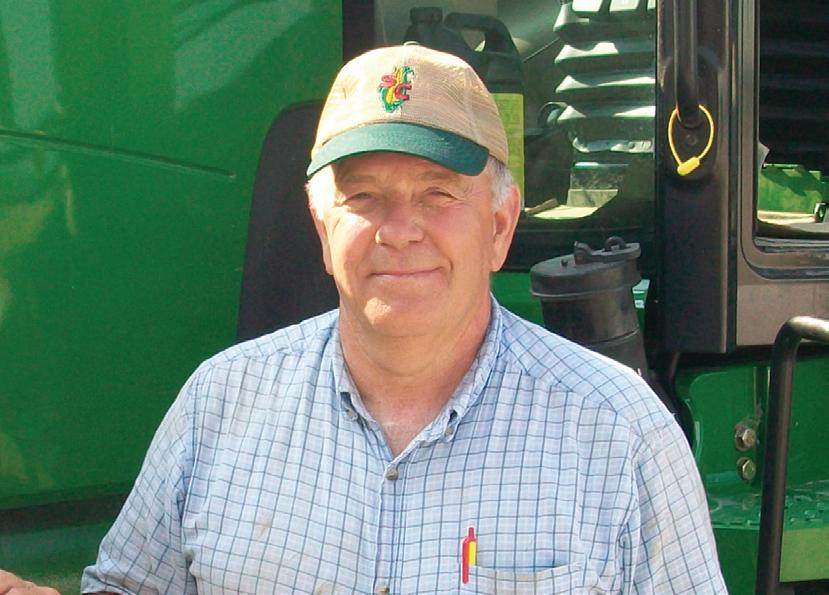


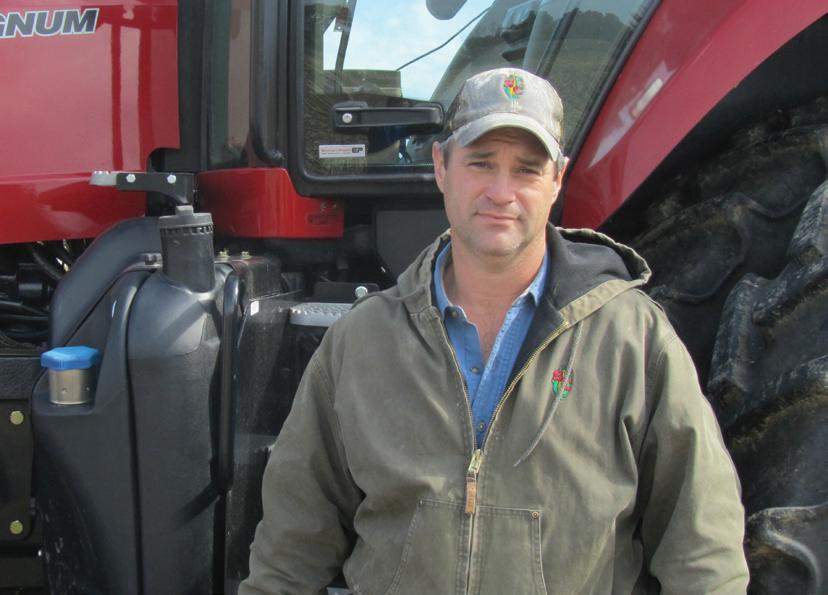






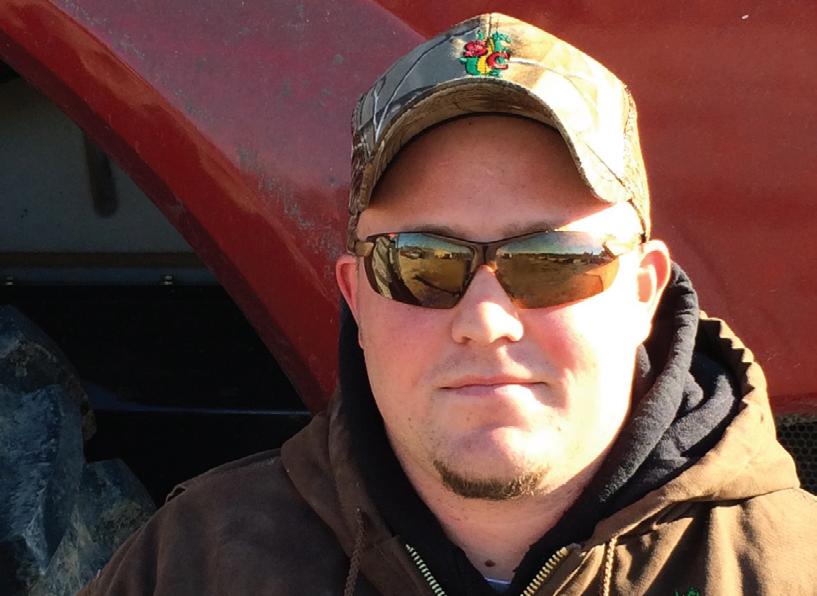


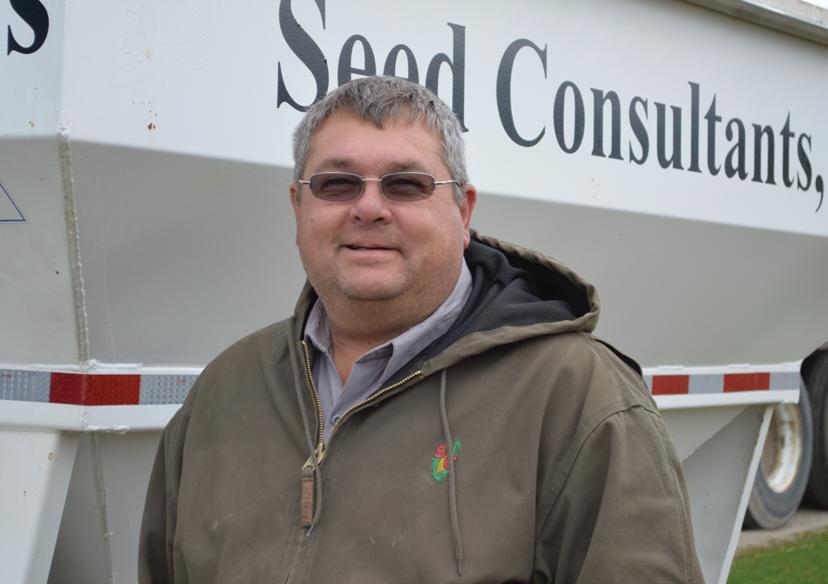

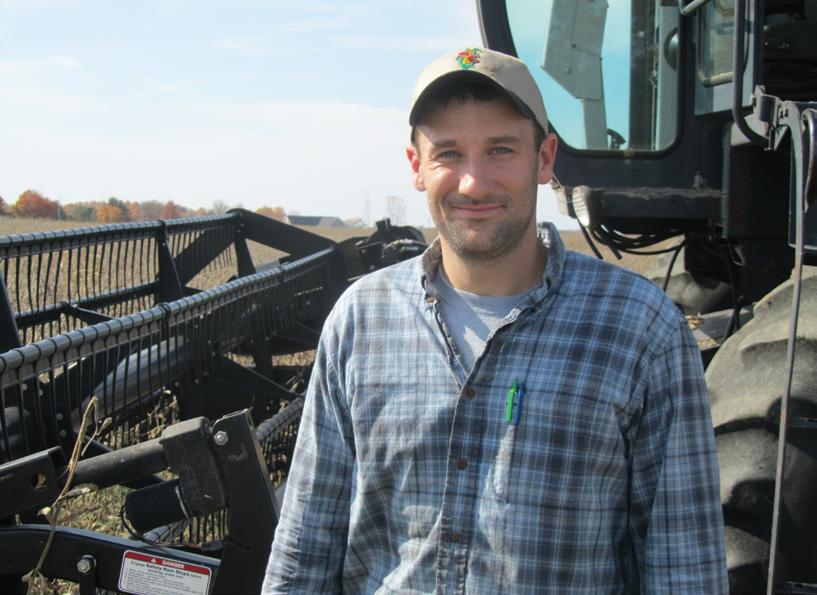


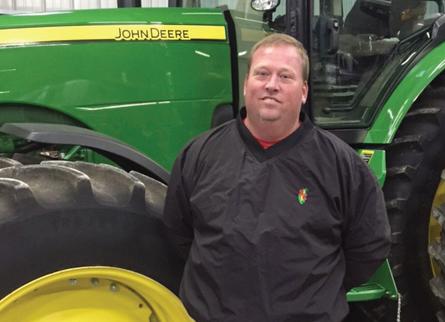

When Seed Consultants opened for business in 1990, we set out to build a different kind of seed company. One predicated on seedsmanship rather than salesmanship and proof rather than promises. As one of the largest eastern Corn Belt based seed companies, we conduct thousands of eld trials a year across our marketing area, ensuring our customers receive the best in- eld performance. By cutting out the middleman, we are able to offer our customers a tremendous value without sacri cing top-end yields.



So join the thousands of other corn and soybean farmers across the eastern Corn Belt who are already in on the secret. Find a Seed Consultants’ professional seedsman near you by visiting our website or calling the number below.
